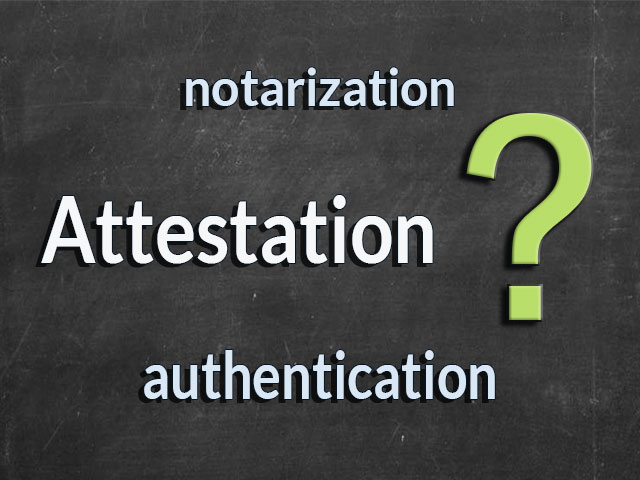
What does it mean to attest a Canadian document? In Canada, the term “document attestation” often refers to the process used to certify the authenticity of a Canadian document so that this document will be officially recognized in a foreign country. This article explains the Canadian document attestation process and points you to more information and assistance.
What does it mean to have a Canadian document attested?
The Canadian document attestation process, which in Canada is more commonly called the document authentication and legalization process, is used to verify the authenticity of Canadian documents so they will be officially recognized in another country.
If your document is destined for a country that is a member of the Hague Apostille Convention, your document will require an apostille. Document apostille is a more streamlined process that avoids the need to diplomatic legalization. For more information about the apostille process, please have a look at this helpful article: Apostille Countries – What countries have signed the Hague Apostille Convention?
Having a document attested in Canada is a three-step process. Let’s look at each of these three steps:
- Document Preparation – The first step is to make sure your documents meet the requirements set by the authentication office (Step 2) and the relevant embassy or consulate (Step 3). Document preparation may require notarization, translation, and preparing additional supporting documents.
- Document Authentication – The second step is to have your documents authenticated by the appropriate office in Canada. If everything is in order with your documents, they will place a certificate of authentication directly on your documents, verifying the authenticity of the signatures on the documents.
- Document Legalization – The final step is have your documents legalized by the embassy or consulate of the destination country. The diplomatic mission will place either a stamp or sticker directly on your documents, confirming that the documents have been legalized (attested).
This step does not apply of your destination country is a member of the Hague Apostille Convention.
What is the difference between attestation and notarization?
Document attestation and document notarization are different processes. Notarization is a term used to describe the act of having a Canadian Notary Public apply their signature and seal to a document. The notarization process confirms the authenticity of the signature on the document being notarized. However, notarization by a Canadian notary will only be recognized within Canada.
If you need your Canadian documents officially recognized in a foreign country, the document notarization process is not sufficient. You will also need to get your documents attested. While the document notarization process is used to confirm the authenticity of a signature on a document within Canada, it is the document attestation process that confirms the authenticity of a signature on a Canadian document when used outside of Canada.
How do I get my documents attested?
You have the option of navigating your documents through the Canadian attestation process yourself by mail. However, it is very important that you research the procedure in advance. Each authentication office has its own unique rules. Plus, each embassy and consulate sets its own specific requirements for how documents should be prepared and submitted.
What are Attestation Services?
In Canada, expert document attestation (authentication and legalization) services are available if you are unable to handle the process yourself, if you need your documents processed quickly, or if you simply want an expert to handle the process on your behalf. We are the leading document attestation service in Canada, processing many thousands of documents for our clients each year.
Using our document attestation services can save you valuable processing time. We manage all aspects of the process on your behalf. Contact us to discuss your documents and have your questions answered. Call us toll-free at 1-888-433-1011, or send us an online request.
